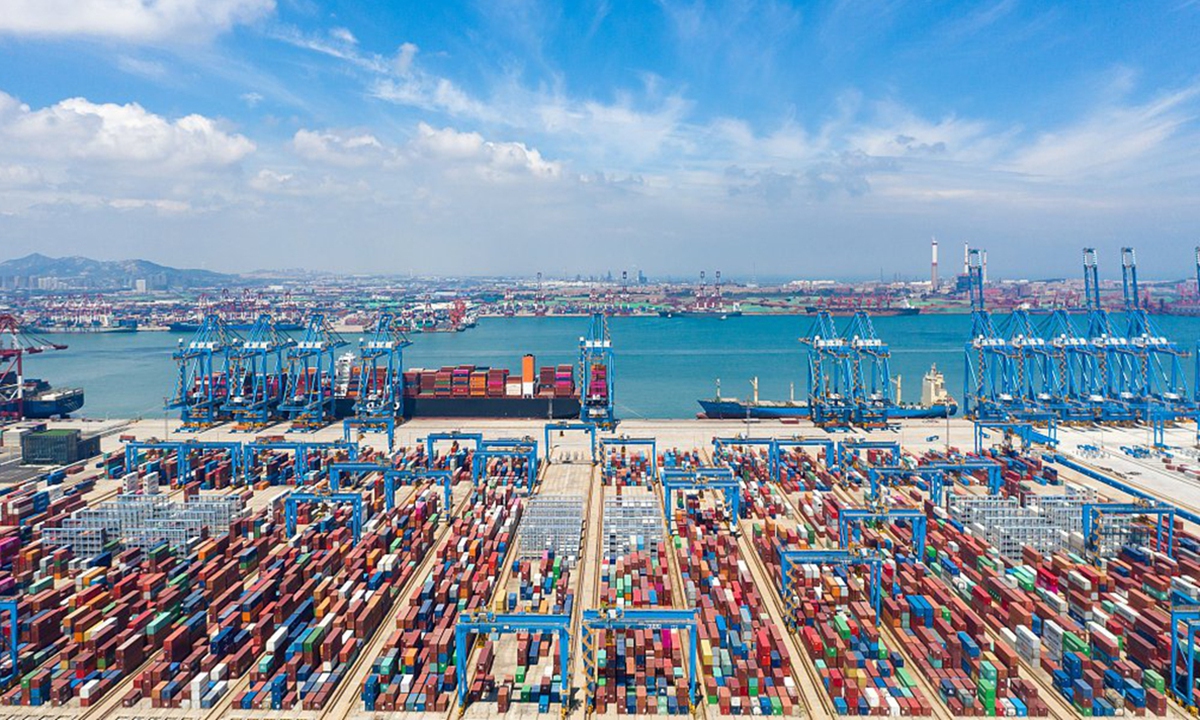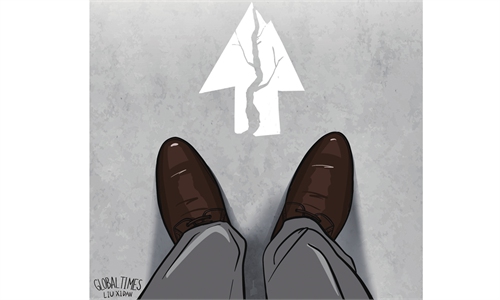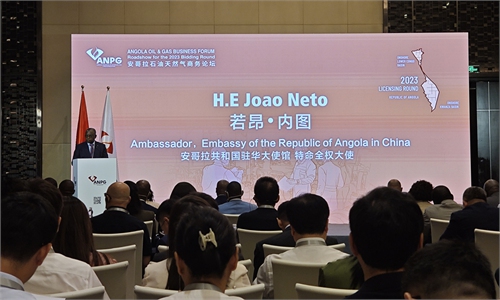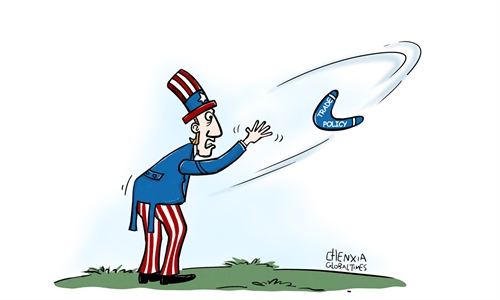China's foreign trade grows 0.4% from Jan-Jul, expected to stabilize in Q4 amid recovery: experts
Stabilization expected in Q4 amid further economic recovery: experts

China trade economy File photo: VCG
China's foreign trade grew by 0.4 percent year-on-year in the first seven months of 2023 to 23.55 trillion yuan ($3.28 trillion), data from the General Administration of Customs (GAC) showed on Tuesday.
A relatively higher base, a slowdown in overseas demand and falling commodity prices were the major reasons behind the performance, experts said, foreseeing a potential rebound in the fourth quarter as support measures further take effect.
Exports increased 1.5 percent year-on-year in yuan-denominated terms to 13.47 trillion yuan in the period, while imports declined 1.1 percent year-on-year to 10.08 trillion yuan.
In July alone, foreign trade reached 3.46 trillion yuan, down 8.3 percent year-on-year. The exports dropped 9.2 percent year-on-year to 2.02 trillion yuan due to declining overseas demand, while the imports decreased 6.9 percent year-on-year to 1.44 trillion yuan.
Notably, in July, exports of new-energy vehicles increased 80 percent year-on-year to 88,000, data from the China Passenger Car Association showed on Tuesday.
The figures were in line with expectations and showed a relatively stable trend combined with the readings in June, reflecting the nation's trade resilience even under pressure, Huo Jianguo, a vice chairman of the China Society for World Trade Organization Studies in Beijing, told the Global Times on Tuesday, adding that the performance was achieved on a relatively high base in 2022.
Domestic consumption in the EU and the US - China's major trading partners - has been affected by inflation and a potential recession, resulting in a direct demand drop, Hu Qimu, the deputy secretary general of the digital real economies integration Forum 50, told the Global Times on Tuesday.
Hu added that "de-risking" moves by some Western countries to shift orders to other countries may also have a short-term impact.
China's trade with the EU, its second-largest partner, declined by 0.1 percent year-on-year to 3.22 trillion yuan. The US remained the third-largest trading partner, though total bilateral trade plunged 9.6 percent to 2.64 trillion yuan, according to the GAC data.
The Association of Southeast Asian Nations remained the largest, with bilateral trade up by 2.8 percent year-on-year to 3.59 trillion yuan, accounting for 15.3 percent of the total.
Zhou Maohua, an economist at China Everbright Bank, said that continuous drops in major global trading commodities such as energy, metal and agricultural products also depressed the prices for export goods.
Stimulus policies to safeguard trade, such as strengthened support to reduce the burden for micro-sized, small and medium-sized enterprises (MSMEs) along with other measures will play a vital role, especially as MSMEs are the major entities involved in trade, Huo noted.
Huo and Hu stressed the importance of implementing support measures targeting investment and consumption to guide the steady development of the nation's economy and hedge against uncertainties from external demand.
Chinese authorities have ramped up government support. On Friday, several government agencies and the nation's central bank vowed to take more targeted policy measures to accelerate the economy.
For instance, the National Development and Reform Commission, China's top economic planner, said that the follow-up policies will cover six aspects including improving the business environment and stabilizing foreign trade.
Experts expect trade to further improve moving into the fourth quarter, given relatively stable external demand and China's further economic recovery.
Chinese private trading enterprises have strong resilience, Huo noted. Newly emerging markets and structural changes in China's trade will also help the recovery.
Hu said that discovering the consumption potential of more partners such as the Middle East and countries and regions along the BRI would be a useful response to structural changes.
It will also be difficult for the West to find alternative markets to fully replace China due to its strength in the global industrial chain.
In the second half of 2023, China will take multiple measures to keep the nation's foreign trade and investment stable, according to a key meeting held by the Political Bureau of the Communist Party of China Central Committee on July 24.
The meeting called for supporting pilot free trade zones and free trade ports that are eligible in aligning with high-standard international economic and trade rules, and trying out more reforms and opening-up measures, the Xinhua News Agency reported.



